Turn your cleaning services website into a lead engine: real audits, high-intent keywords, and local SEO tuned for how homeowners hire in 2025.
5.0

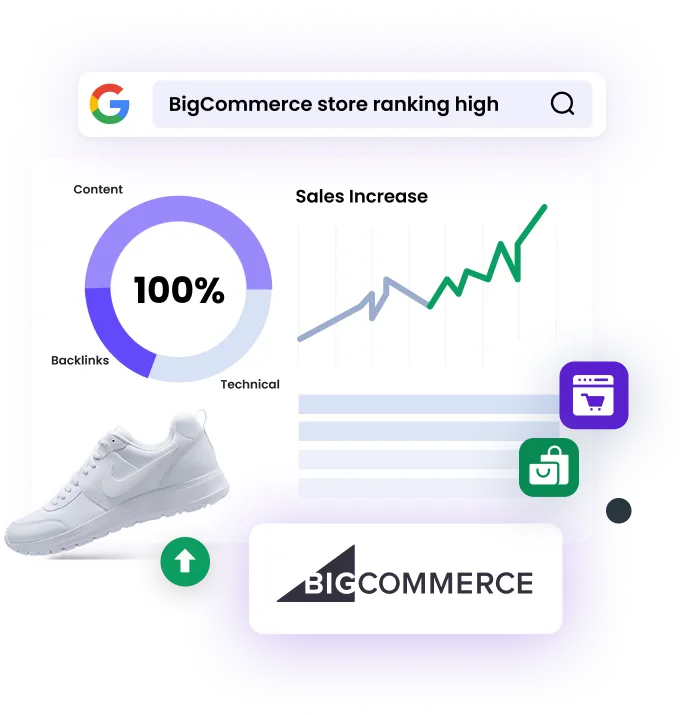
Most cleaning companies depend on unpredictable one-time jobs, like move-outs or post-renovation cleanings. Even loyal clients cancel when seasons change or competitors offer lower prices. Combine that with tight margins, rising ad costs, and time spent chasing late payments, and growth can quickly stall.
The market’s huge, worth over $415.9 billion, but competition is fierce. Platforms like Handy and Thumbtack dominate search results, while customers expect fast replies and eco-friendly options. Without your own reliable lead source, it’s easy to get buried online.
At the same time, a proper SEO for cleaning services can help you:
In this guide, we’ll share the proven framework our SEO agency has used to help 60+ cleaning businesses boost visibility, leads, and ROI.
Next, let’s break down how customers search for cleaning services, starting with the right keywords to target.
Your customers start their search on Google, typing phrases that reveal what they need and where. That’s why keyword research is the foundation of SEO for cleaning company success. It helps you match your website content to real homeowner searches and attract leads ready to book.
Many people look for broad terms like “home cleaning services,” but high-intent searches drive better results. Think:
Use tools like Ahrefs, SEMrush, or Google Keyword Planner to find keywords with solid search volume and low competition.
You can also uncover new ideas by checking:
For example, “move-in cleaning services” often has low competition and strong booking intent, ideal for local targeting.

And because cleaning is a local business, always pair your services with city-based keywords like:
These local intent phrases help Google connect your business to nearby searches and keep your schedule full with local leads.
See a screenshot of the local keyword variations around “deep cleaning” in different regions below.
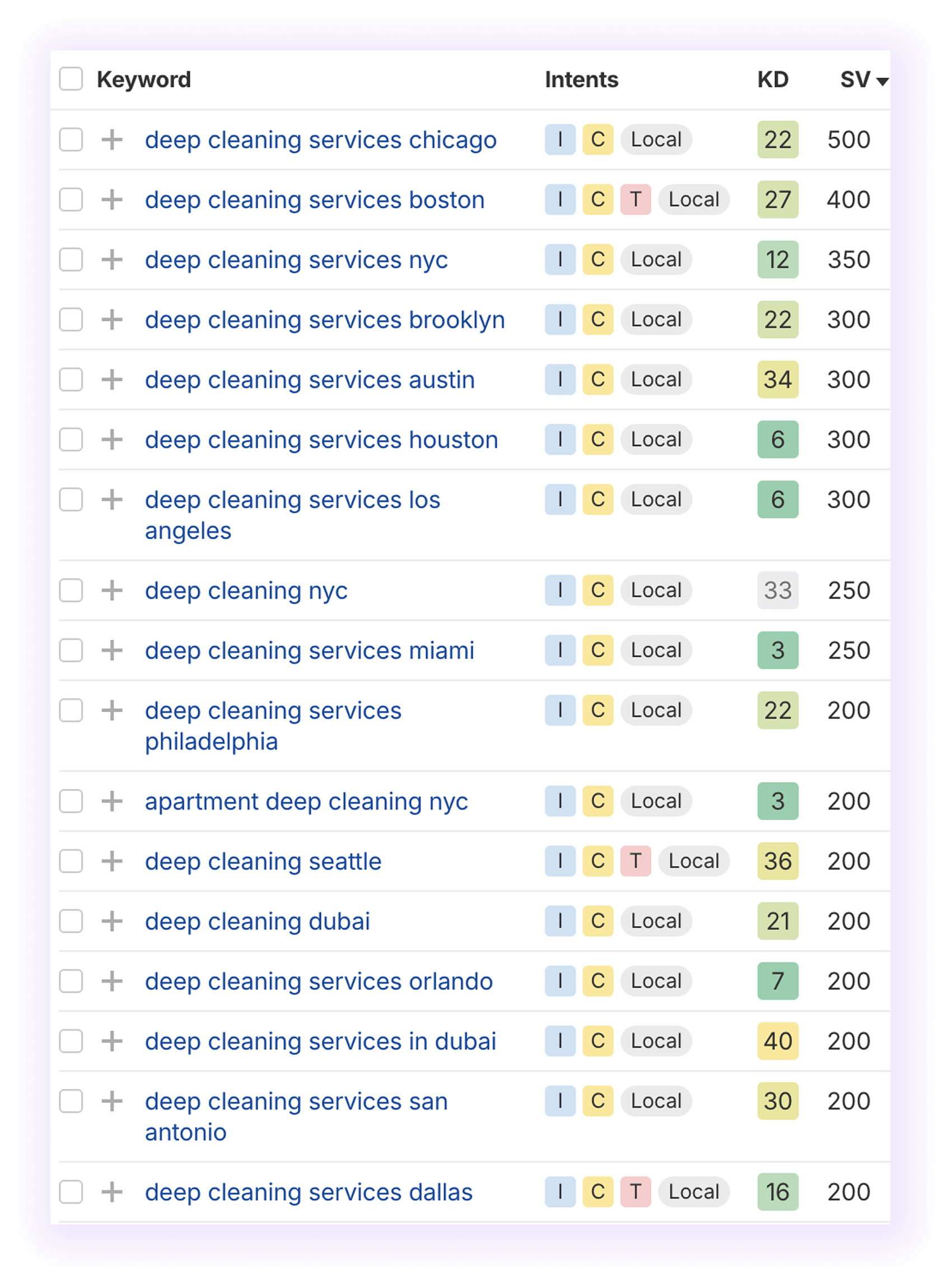
If you’d prefer to have the research and keyword mapping done for you, our SEO agency for cleaning companies can handle it. Reach out for a tailored strategy designed around your specific cleaning services and service areas.
Use the keywords we found to shape a clear website layout that Google can read easily and customers can navigate fast. A strong structure/hierarchy helps each service page rank for the right terms while guiding homeowners straight to what they’re looking for.
For a cleaning company, start with three essential static pages:
These pages should always appear in your main navigation so users can move through your site without friction.
Here’s an example: the site below uses “find a location” and “get pricing” as calls to action. Both work like “contact us,” but “find location” smartly redirects to city-specific pages, a strategy we’ll cover next.
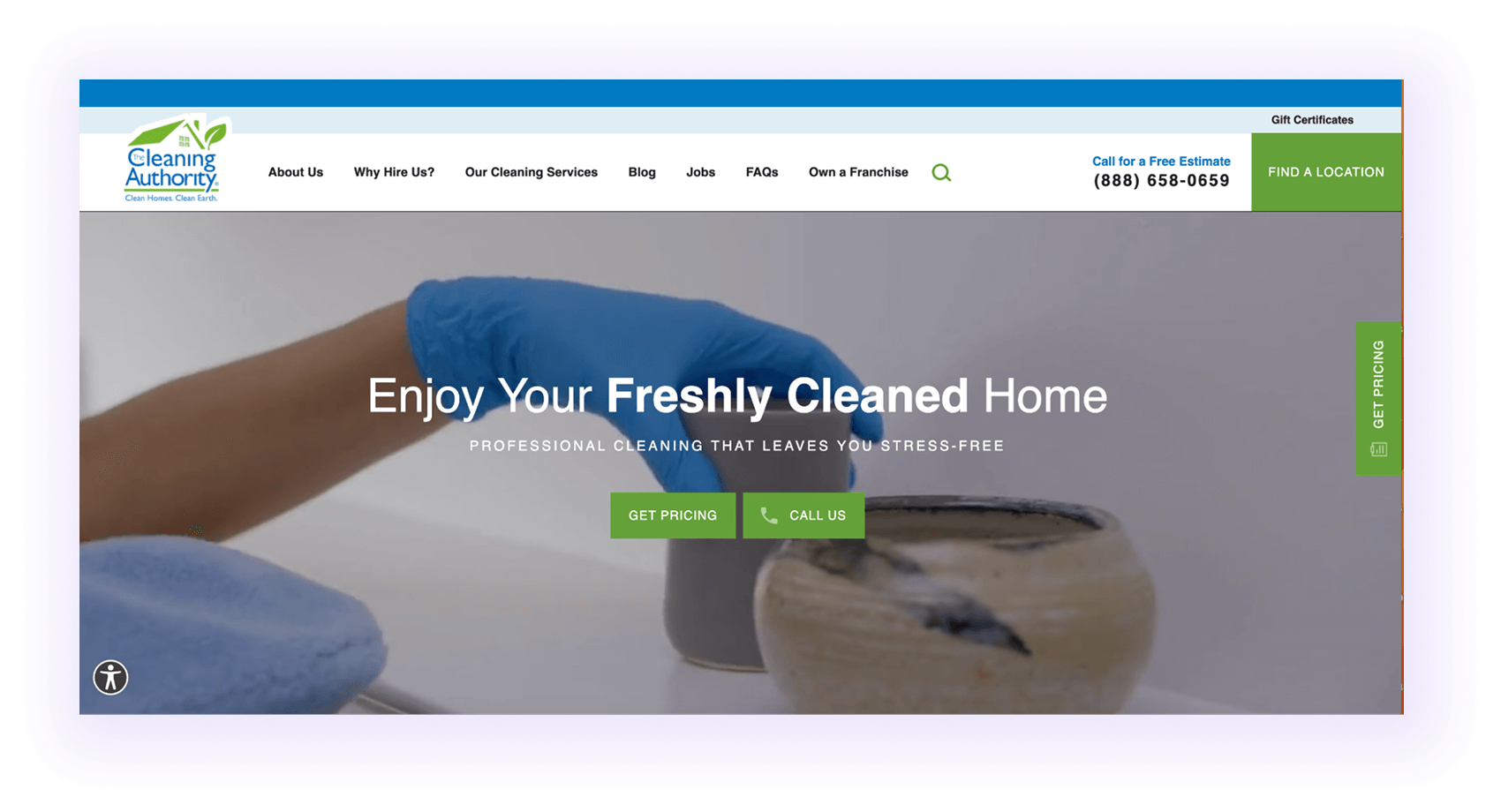
As we’ve shown, many people search for specific home cleaning services, such as:
But how do you rank for these high-intent, long-tail keywords effectively?
Create a dedicated page for each service. Include every service in your main navigation so that it’s easy to find.
This setup helps Google understand what each page should rank for and shows homeowners a clear overview of everything your company offers.

Not every customer searching for cleaning help is a homeowner. Commercial clients, like office managers, hospital administrators, and restaurant owners, also look for specialized services.
If you serve both groups, separate your offerings into residential and commercial cleaning categories. Keyword research shows people search these terms differently (“commercial cleaning services” vs. “home cleaning services”), so having distinct pages helps you rank for both.
Add each category to your main navigation and use a simple drop-down menu to display subservices. For example:


When homeowners or commercial building owners look for cleaning services, they usually want companies that are near them. They often search for terms like:
To rank for these location-specific searches and attract local clients, you need to create individual pages for each location. These pages can be linked in your navigation bar, footer, or a dedicated section of your website to make them easy for visitors to find.
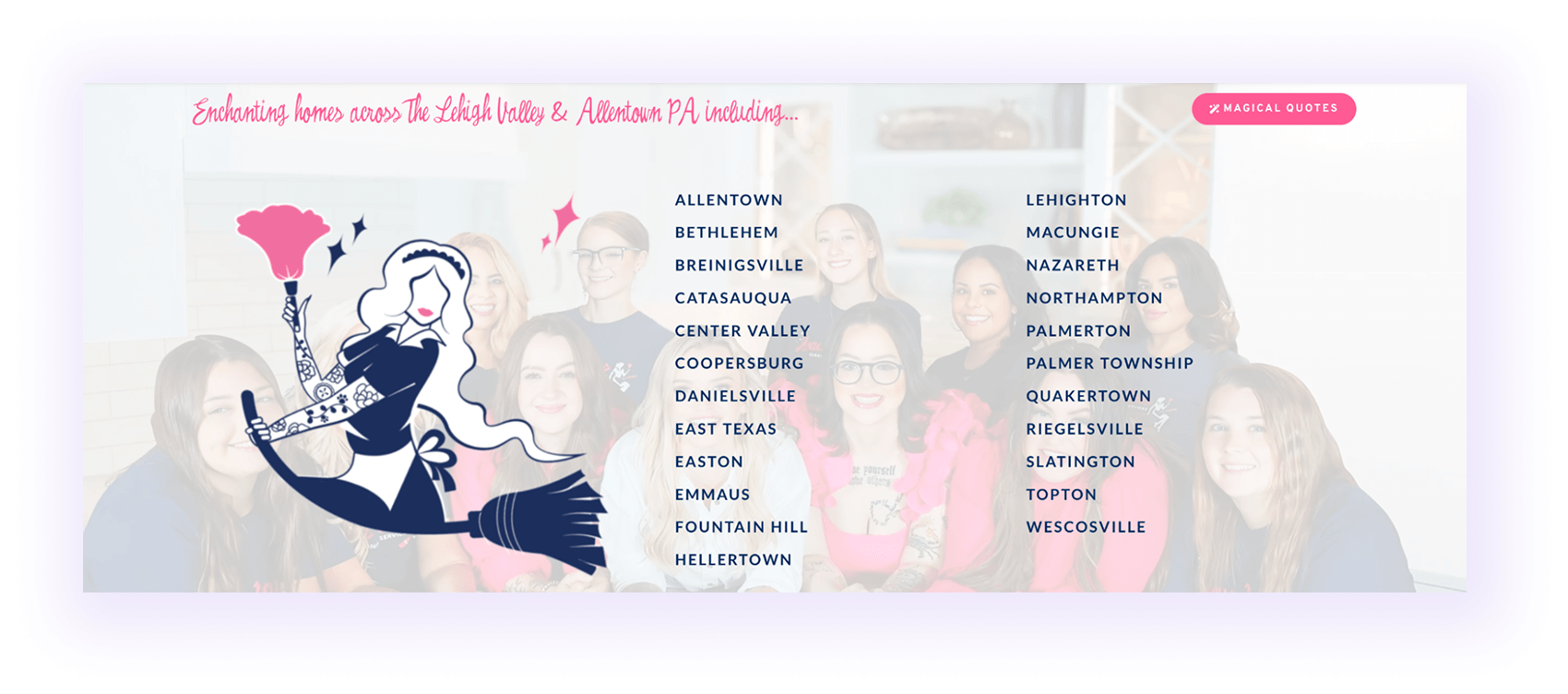
In many cases, homeowners may not want to hire a cleaning company (yet). They might prefer to clean their kitchen oven themselves, wash a single window, remove a stain from a specific type of bathroom tile, or treat a small stain on a rug.
In these situations, homeowners often search for terms like:
Publish helpful, in-depth blog posts that answer these questions. This builds trust and keeps your business top of mind when they’re ready to book.
Stop Guessing Your Cleaning Website Structure—We Will Show You Exactly What Pages You Need
Even a great-looking website won’t perform if the structure isn’t built for search. We’ve helped over 60 cleaning businesses organize their sites for higher rankings and steady leads. Contact our SEO agency for cleaning services to get a structure that works for both Google and your customers.
We’ve shown that many people search for cleaning services near their area, and discussed the importance of creating specific location pages. However, this is not the only approach: there are two main strategies for attracting local customers, depending on whether your company is local or national.
If your cleaning company serves only one area, you should focus your keywords on that location. For example, on your home page, use phrases like:
On your service pages, include location-specific keywords naturally, such as:
Use these phrases in your headings, meta titles, descriptions, and image alt texts, but avoid overusing them to keep the content natural.
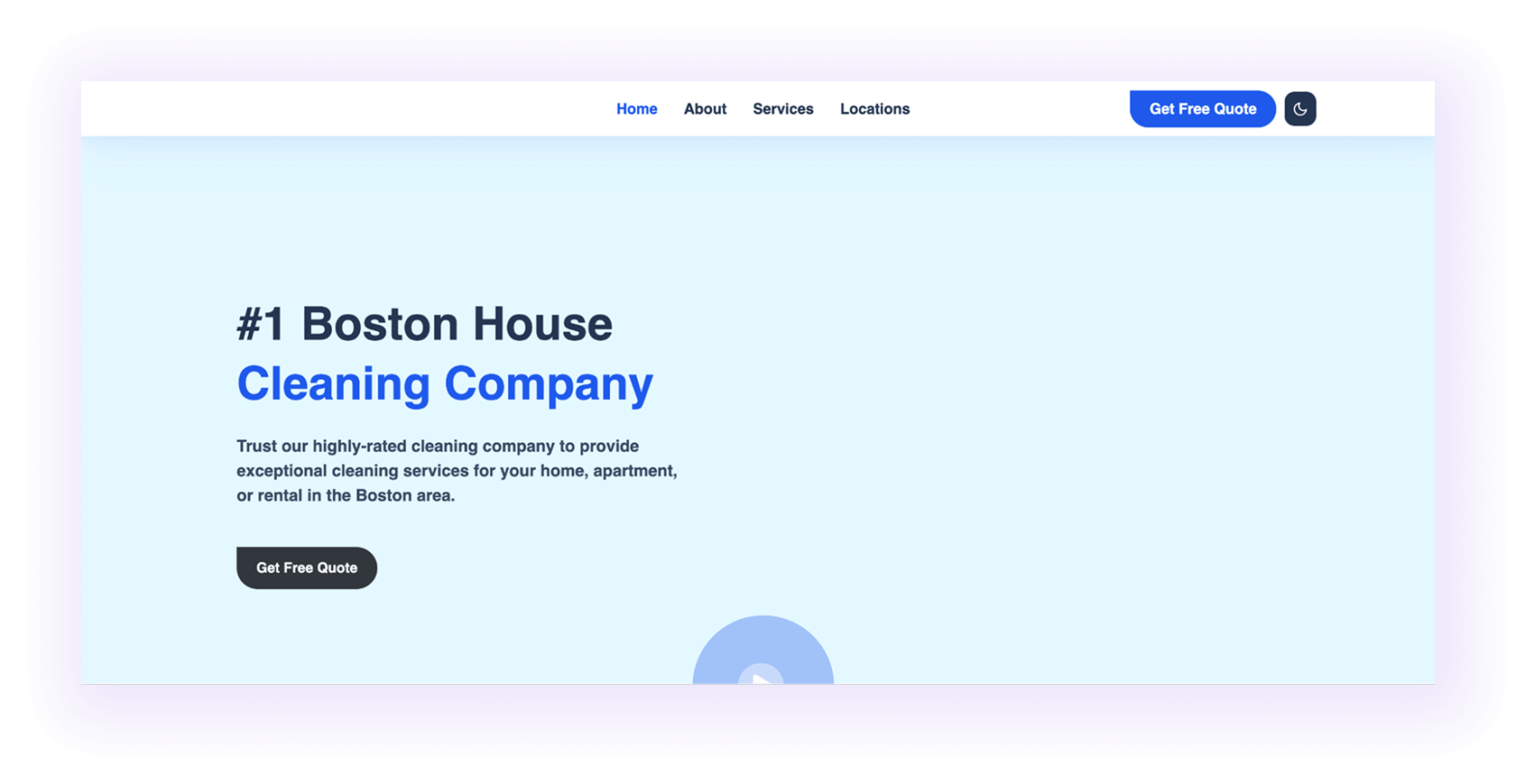
Now, let’s say you offer services across multiple states or cities. It’s important to target all the areas you serve, such as:
To help Google see the areas you serve and assist customers in quickly finding their city, create a location hub page. This central page links to all your individual location pages, keeping navigation simple and your local SEO strong.
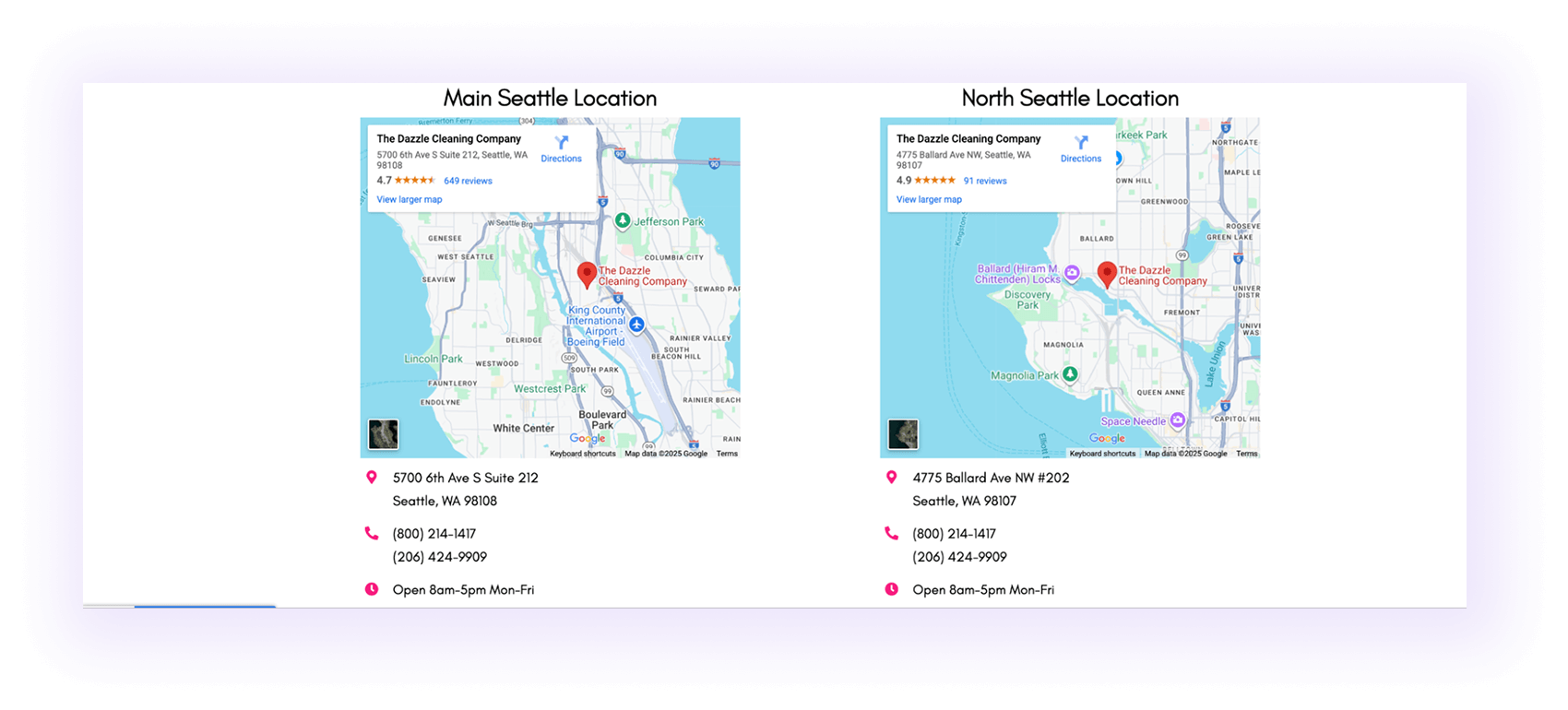
The URL structure for national cleaning companies should look like this:
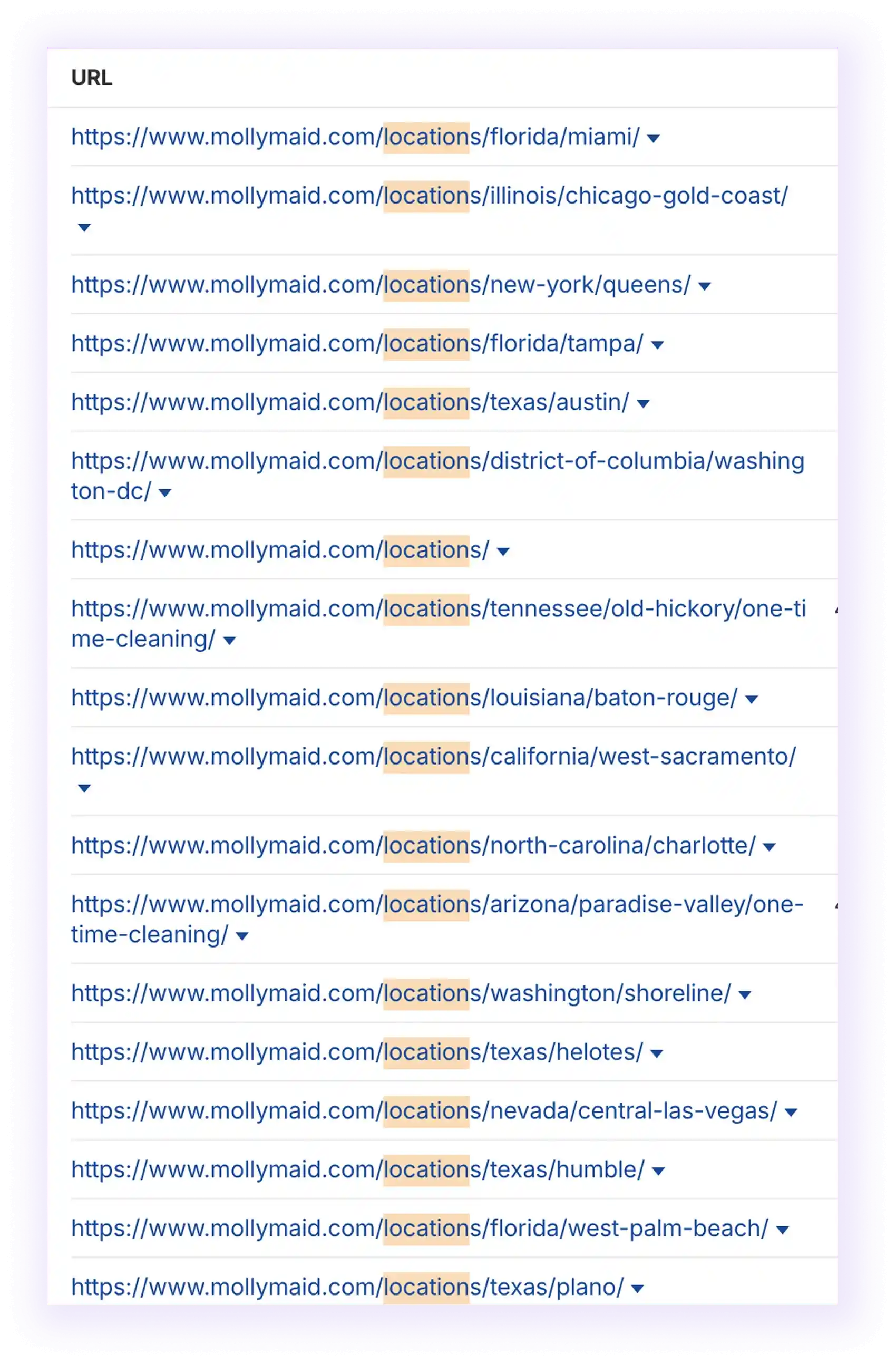
Now your website is optimized for specific locations, but we’re not done. The next step is optimizing your Google Business Profile (GBP) for Maps. Many homeowners search directly on Google Maps for nearby cleaning services, so ranking there can bring in steady, high-intent leads.
Here’s how to optimize your profile:
Here’s an example of a well-optimized GBP:
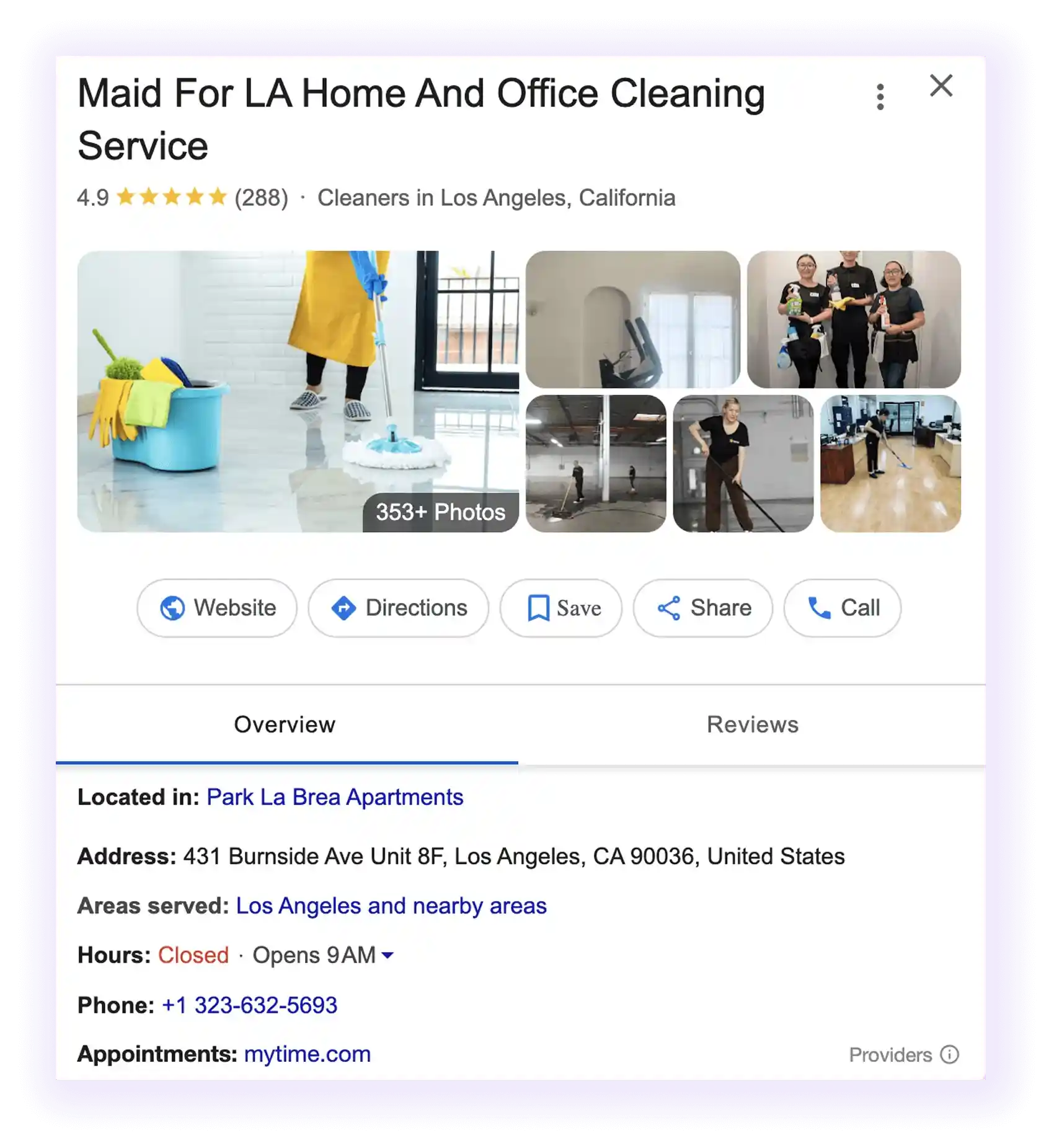
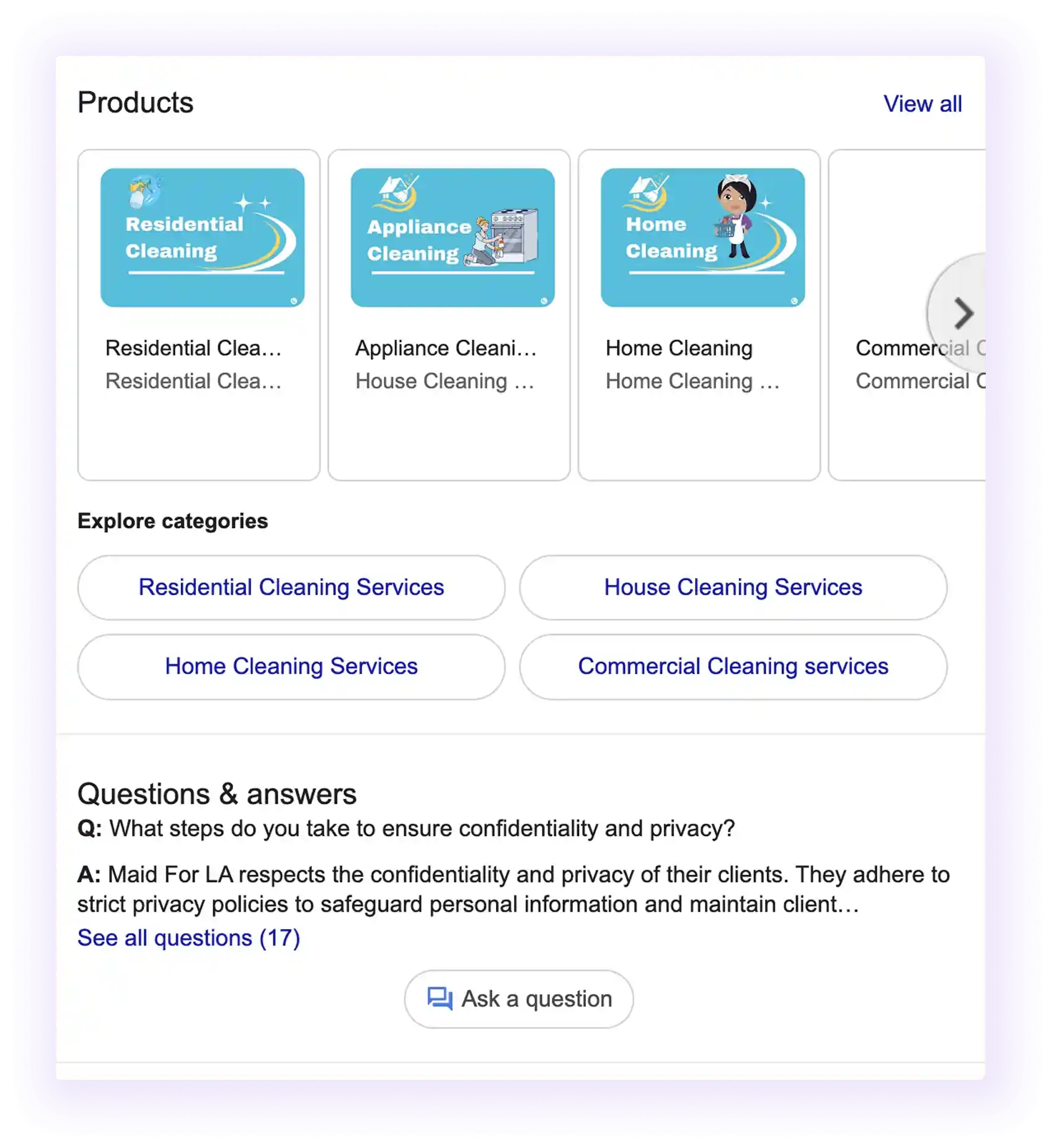
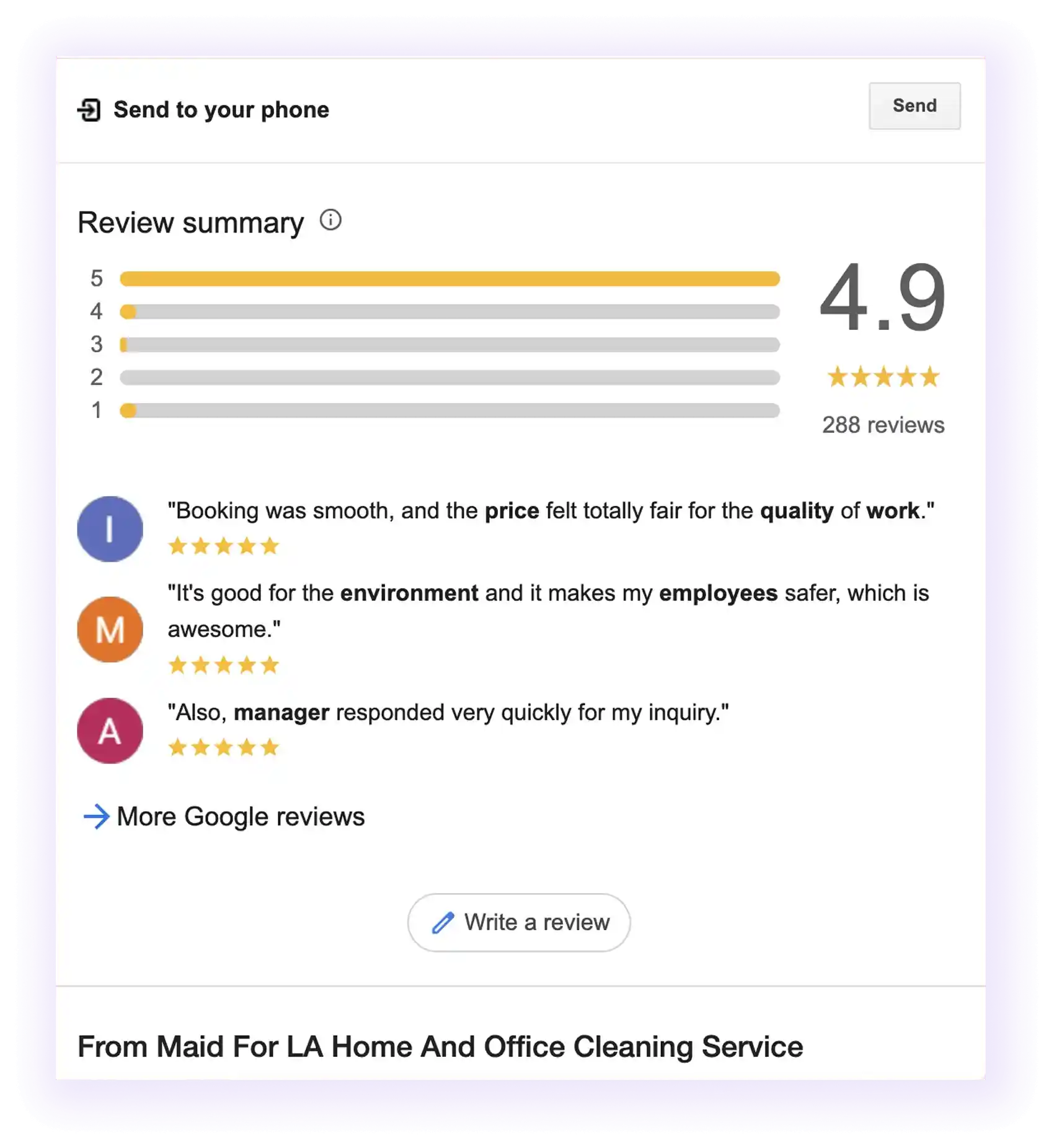
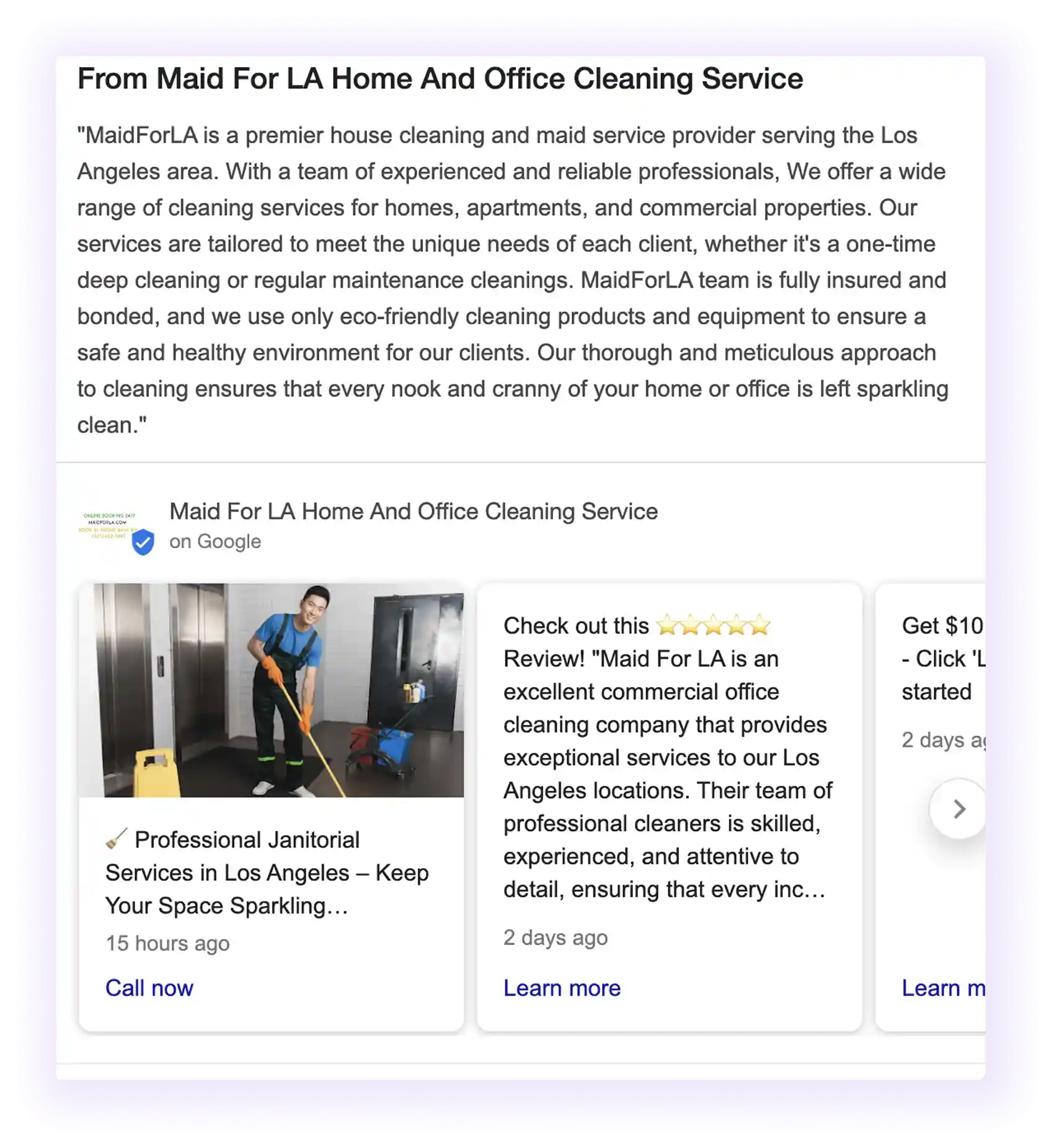

After you’ve followed the steps, your company will start showing up in the map when people start searching for terms such as “home cleaning company in los angeles.”
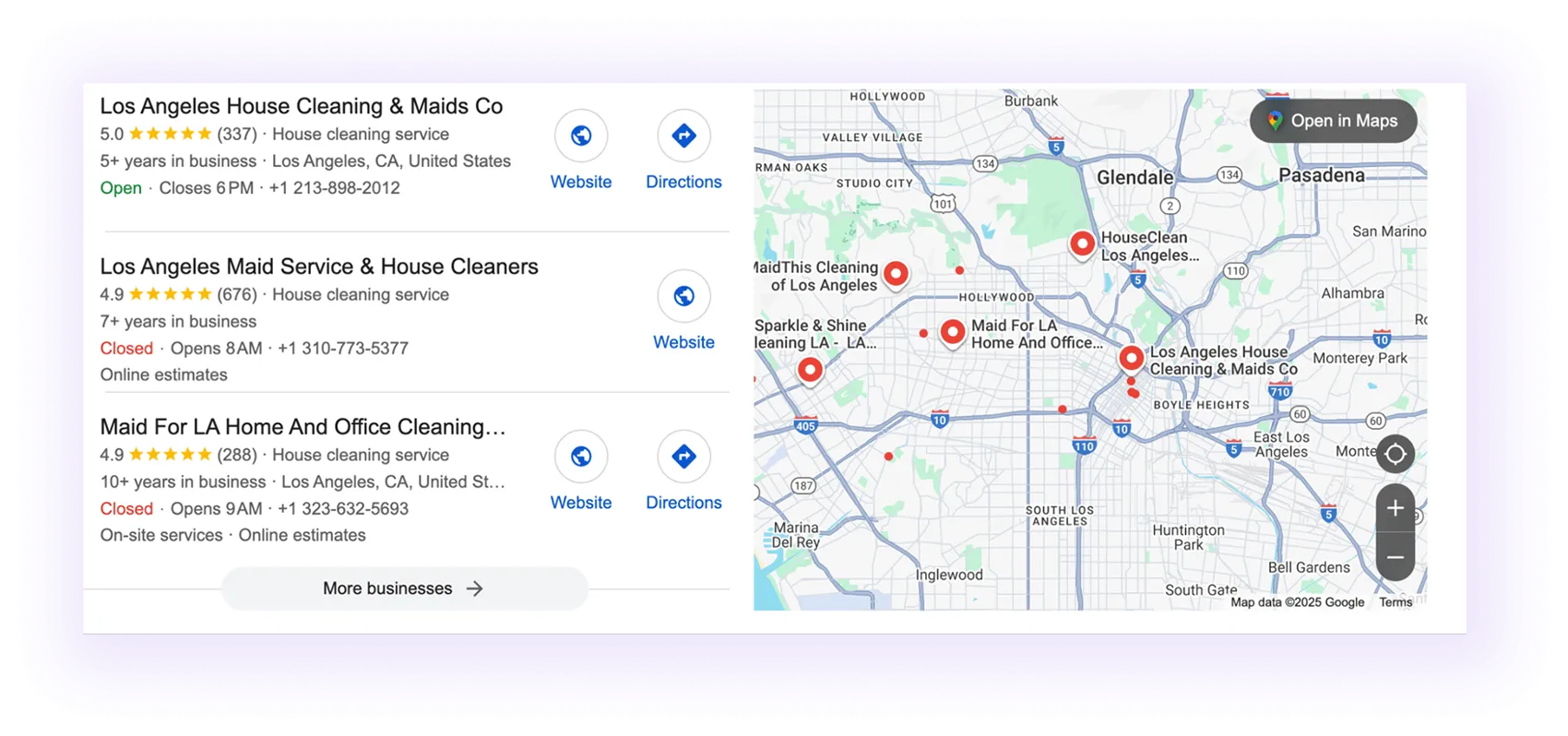
Good structure and optimization get attention, but it’s your content that convinces visitors to book. Homeowners and business owners want to see proof that your cleaning company is reliable, skilled, and worth their trust.
Here’s how to create content that both ranks and converts:


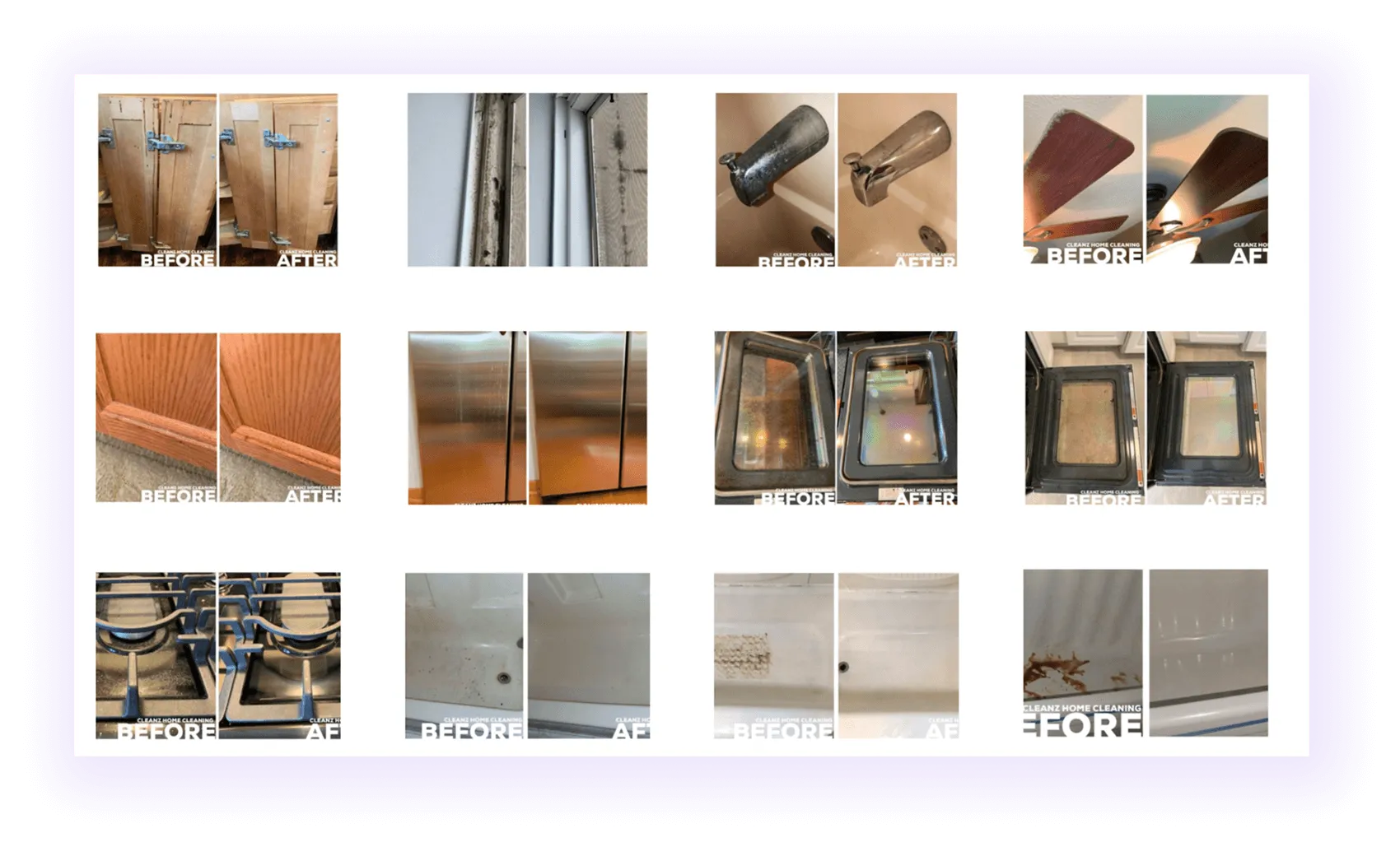

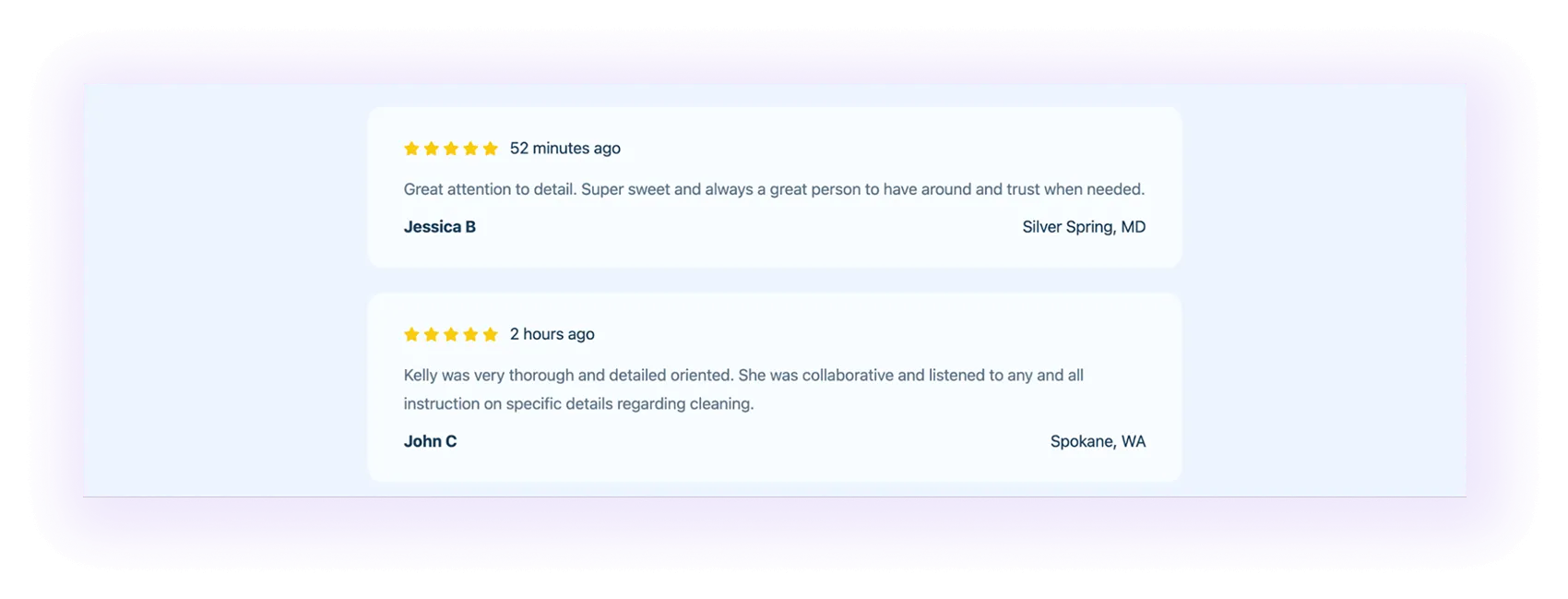


You need blog posts to target search terms and questions, such as “how to remove a carpet stain” or “best way to clean a kitchen oven”, so that people visit your pages, see your expertise, and gain valuable information.
One effective approach for this is the pillar clustering strategy, which involves creating blog posts and informational content around a specific service. For example:
Pillar Page:
Supporting Blog Posts (Clusters):
Each blog links back to your main service page, strengthening SEO and building topic authority.
You can find real topics like this: type your service keyword plus “how to” in Google. Then scroll to People Also Ask and Related Searches. For example, searching “clean a rug” might show ideas like:
These are questions your ideal customers are already asking.
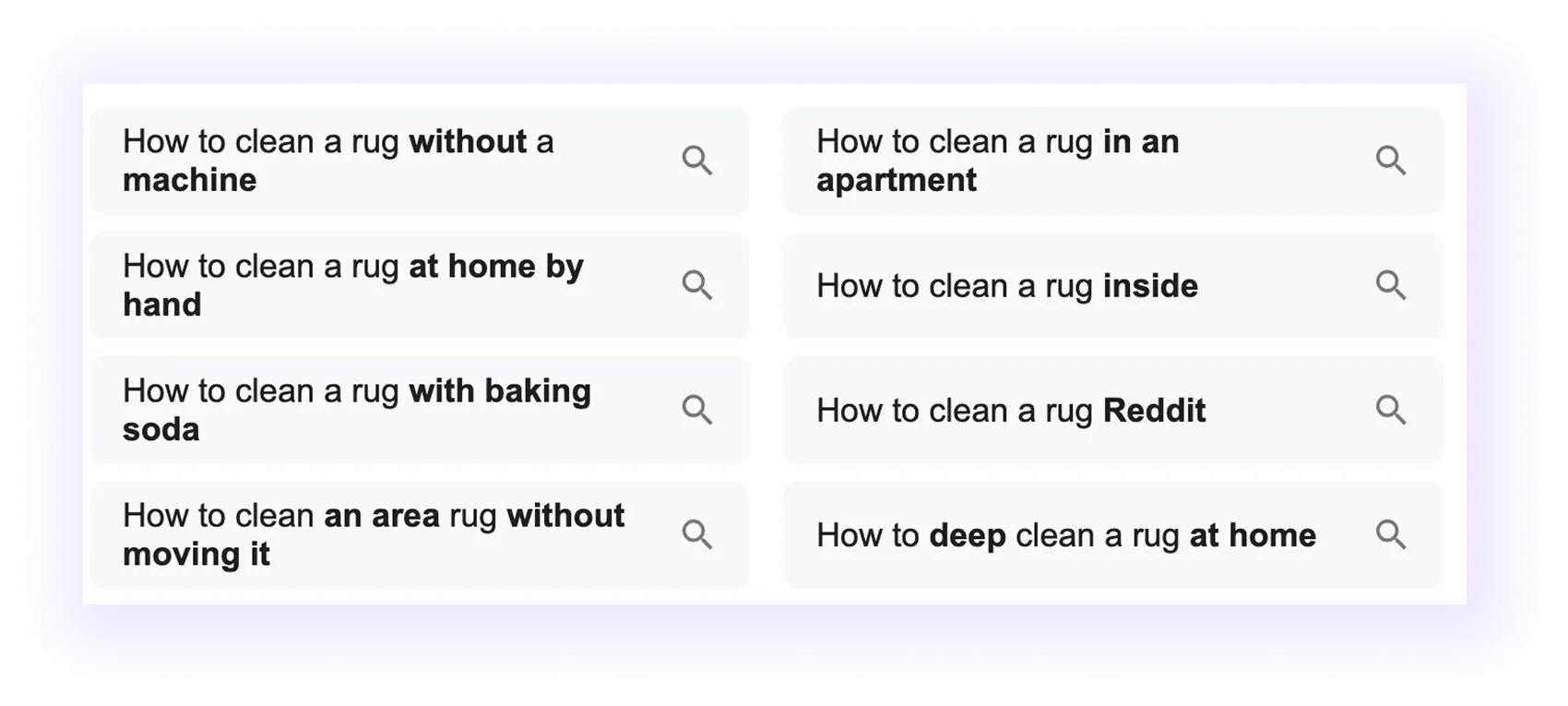
Once you’ve chosen a topic, make sure your post is both search-friendly and genuinely helpful:

Another key part of SEO for cleaning companies is making your website easy for Google to crawl and index. This is called technical SEO. Now we’ll cover how to optimize it efficiently.
The three key elements to focus on are:
Here’s an example of what an optimized XML sitemap looks like:
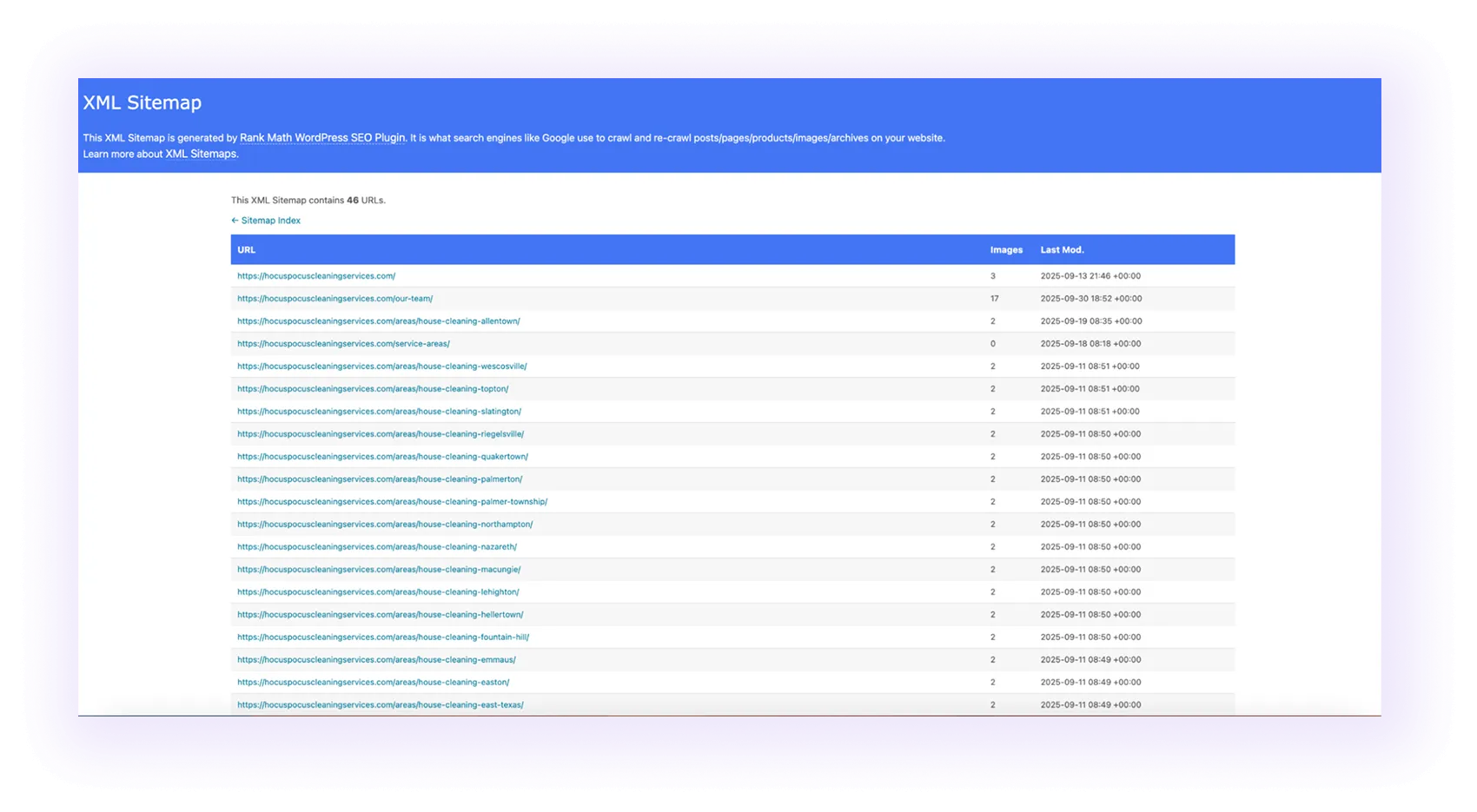
Schema markup helps Google understand your cleaning website faster and display extra details, like FAQs, ratings, and service info (called rich snippets), in search results.
Below is an example of how optimized schema markup appears in search.
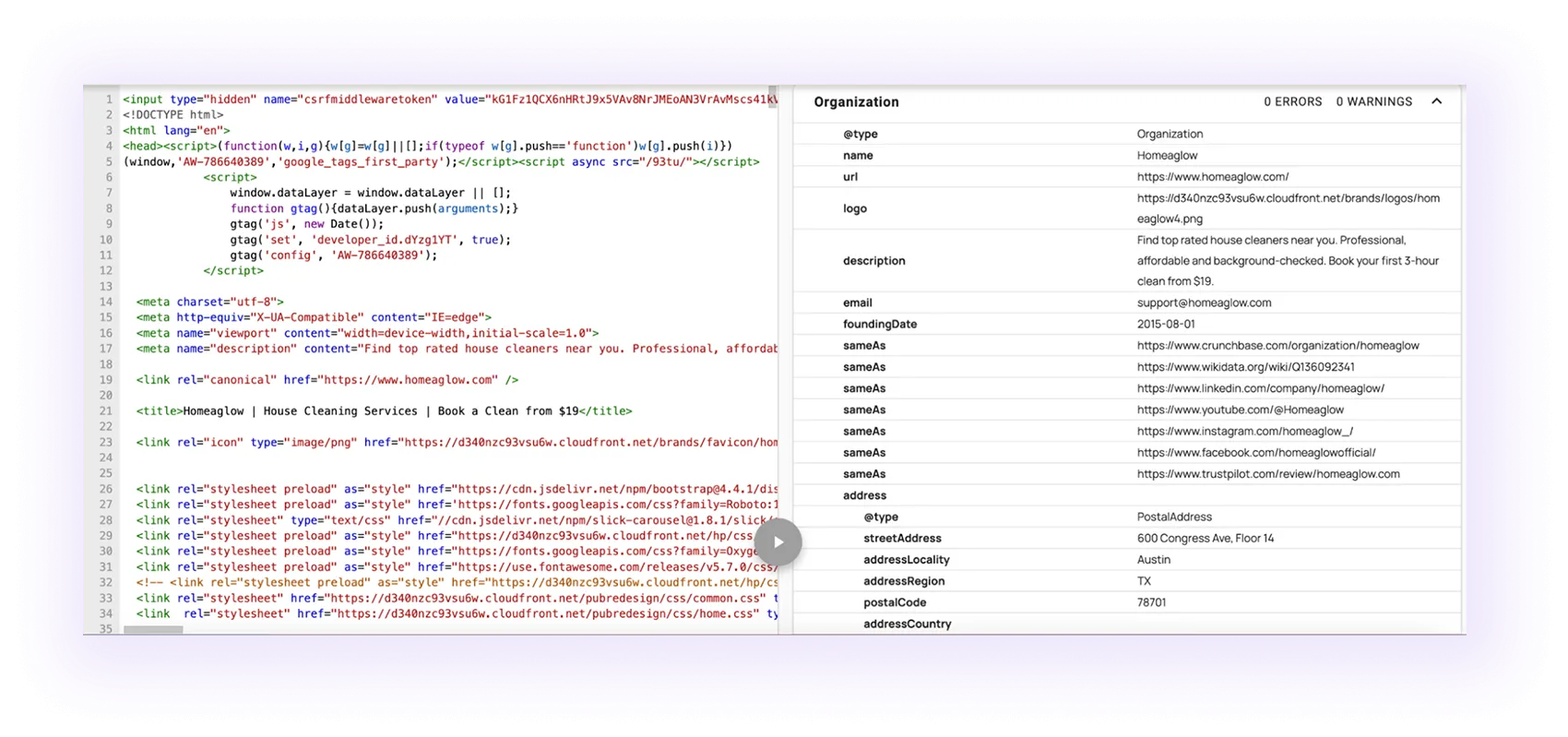
Here are the best schema types for cleaning businesses:
To provide the best user experience and help Google understand the relevance of your pages, it’s important to have a clear URL structure.
Example of a non-SEO URL:
Example of a good SEO-friendly URL:
Next up is internal linking. Those are like the roads that lead both search engines and the visitors, boosting visibility for important pages.
For example, someone browsing your “home cleaning services” page might click through to “kitchen cleaning” or “bathroom cleaning,” increasing engagement and conversion potential.
Here’s how to build strong internal links:
Here’s an example of how a cleaning website links its “home cleaning” page to service subcategories for better navigation and SEO flow.
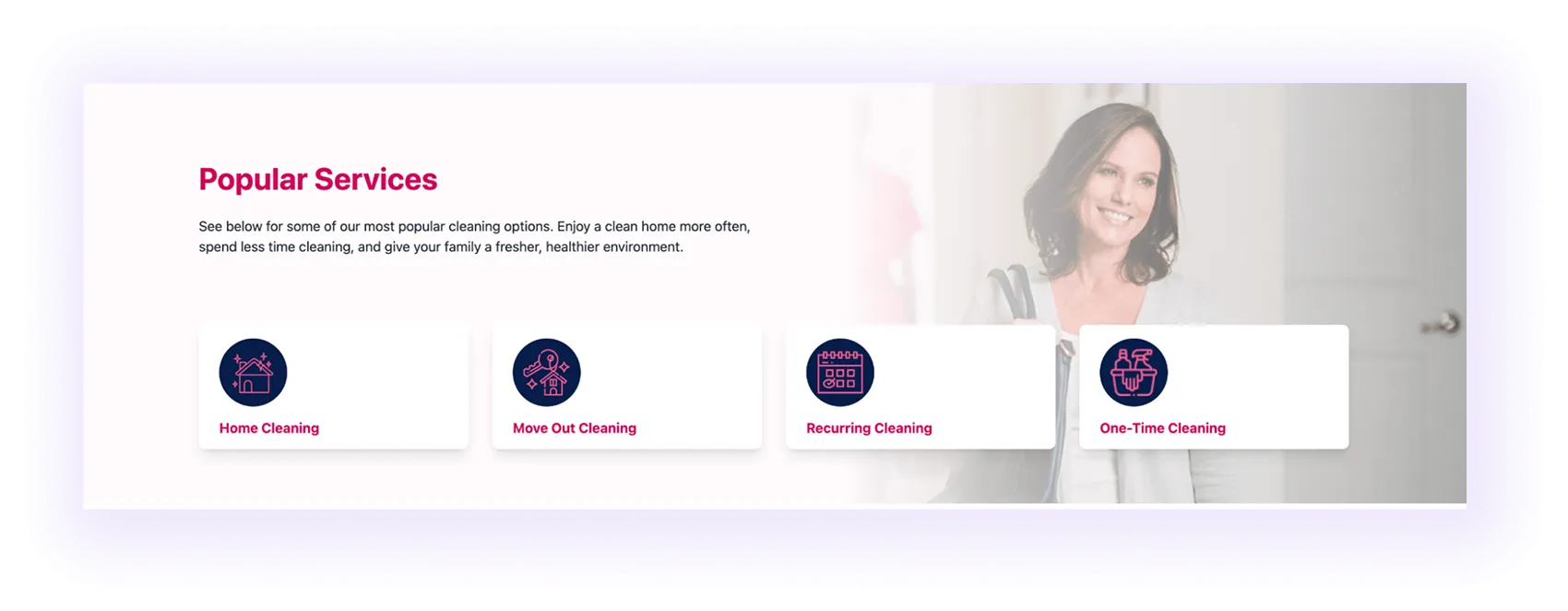
When homeowners spot a new stain, oil on the oven, paint on the wall, or dirt on the tiles, they usually reach for their phone to search for a fix. Since most cleaning-related searches now happen on mobile, your website needs to load fast and look great on any screen.
A mobile-friendly website should:
A smooth mobile experience helps visitors find what they need quickly, builds trust, and increases the chances they’ll contact your cleaning company.
See below how an optimzied website can look on mobile.
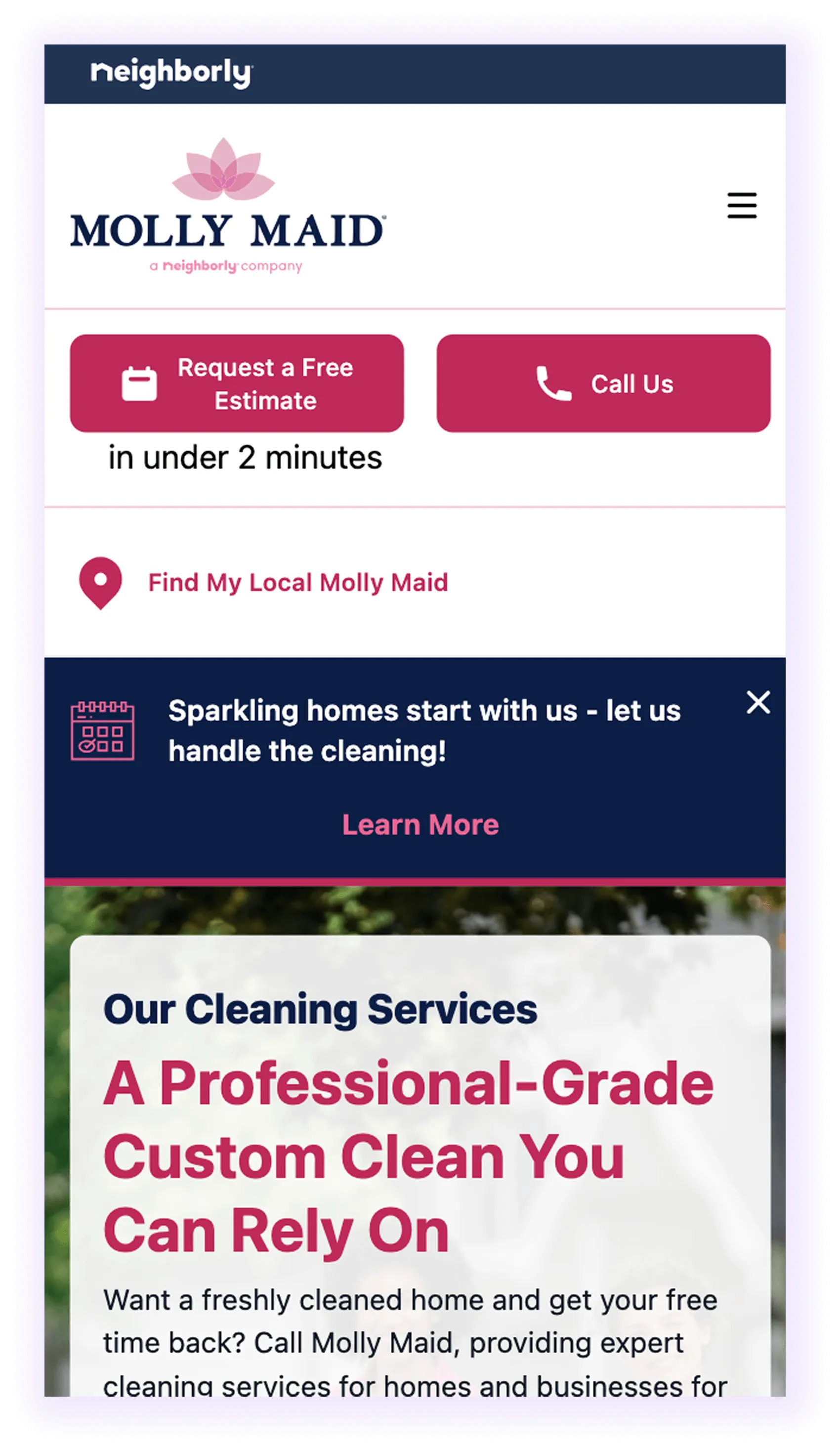
Speed is vital for anyone dealing with cleaning needs. If your site loads slowly, they’ll leave before seeing what you offer.
Let’s see how to boost speed to help improve rankings:
Aim for a performance score above 80 on both desktop and mobile.
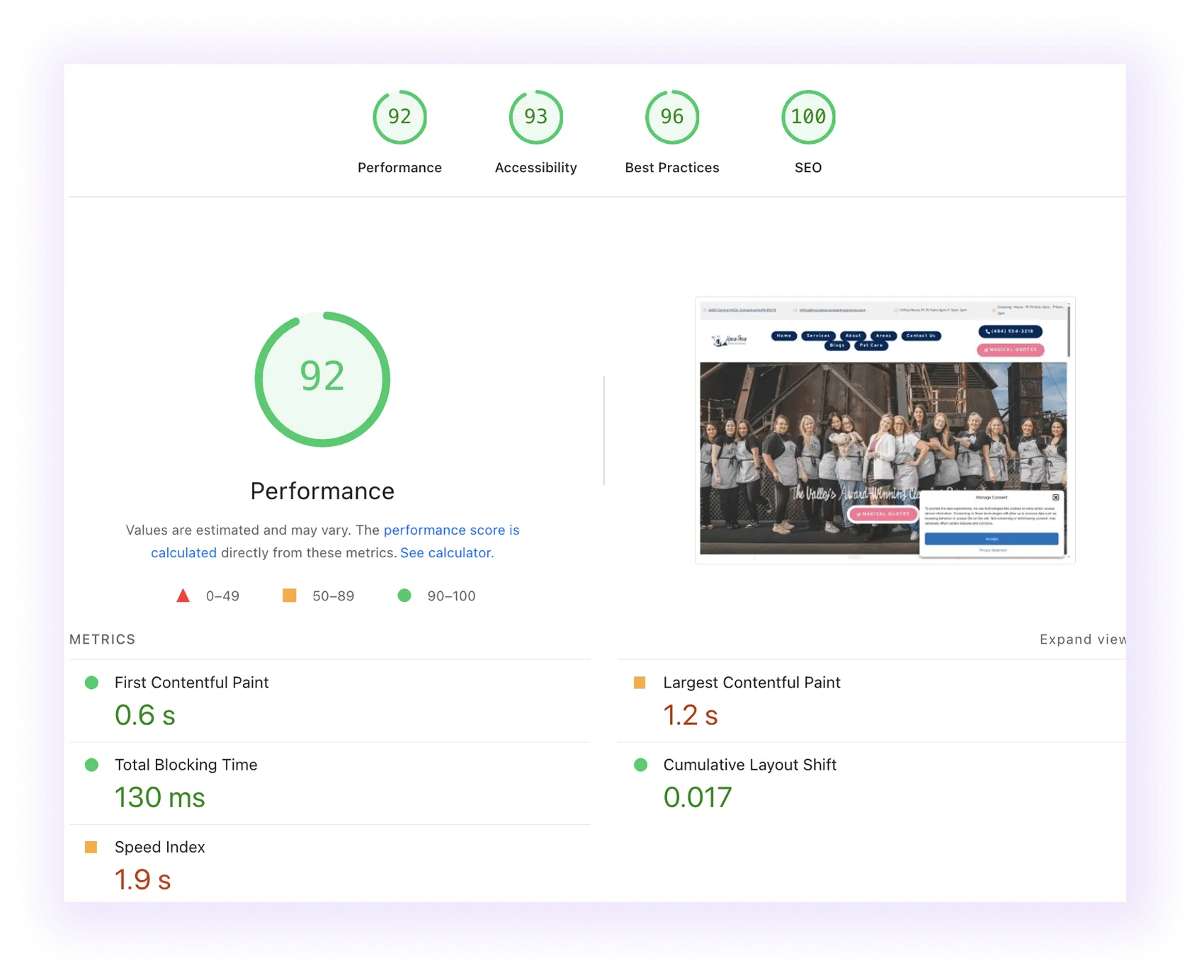
We can’t discuss technical SEO without the Core Web Vitals: Google’s way of measuring how smooth and fast your site feels to visitors:
When your cleaning website meets these benchmarks, you’ll pass Google’s Core Web Vitals test and deliver a faster, more reliable experience for your visitors (see below).
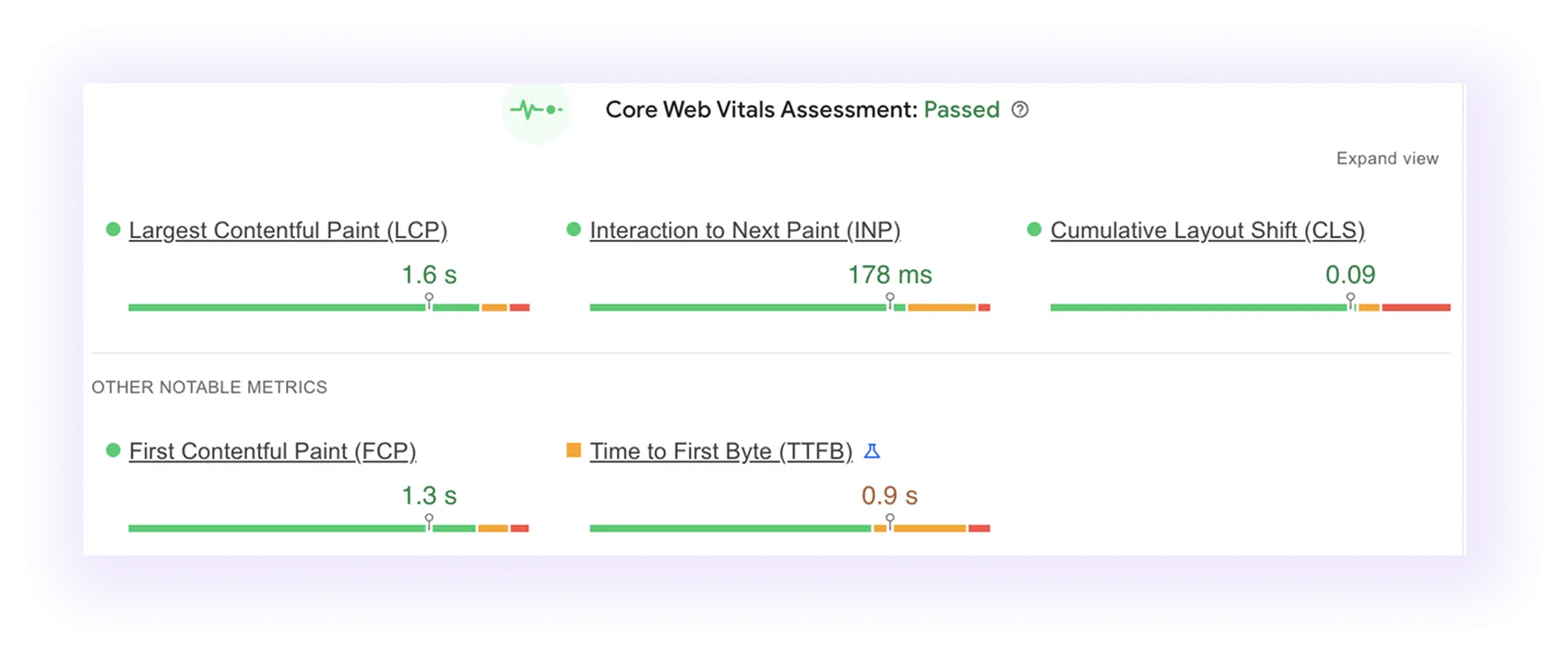
As your cleaning company grows and you add new services, case studies, or site features, minor issues can build up and affect performance. Regular technical SEO audits help keep everything running smoothly.
Use tools like Ahrefs, Google Search Console, and Screaming Frog to spot:
Aim to keep your site health above 99% for consistent performance and rankings.
If you’d rather focus on running your business, our cleaning SEO team can manage it for you, auditing 150+ technical factors to keep your site fast, stable, and search-ready.
Once Google can crawl and rank your pages, but ranking high also depends on your website’s authority, and that’s all about link building: earning backlinks from reputable, relevant websites that vouch for your business.
It’s not about collecting hundreds of random links; it’s about quality. Focus on backlinks from:
For cleaning companies, three link-building strategies work best:
Let’s break each one down.
Guest posting means writing a helpful article for another website in your industry and adding a link back to one of your service pages. Find sites your customers might read, reach out to the owner or editor, and suggest a helpful topic you can write about.
Link insertion is when you place your link inside an article that already exists on another site. Look for posts related to cleaning or home care, find a spot where your link fits naturally, and ask the site owner to add it.
Here are some types of sites you can contact for guest posts or link placements:
Another strong link-building method is directory listings: adding your cleaning business to reputable online directories. These listings help new clients find you and strengthen your site’s authority with quality backlinks.
Submit your business to both general contractor directories (like Yelp, Thumbtack, or BBB) and cleaning-specific directories focused on home cleaning, janitorial, or home improvement services, such as:
For digital PR, you create data-backed, newsworthy content, such as unique surveys, studies, and original insights, that attract attention from journalists, bloggers, and home improvement publications.
Then craft a short, compelling pitch and reach out to editors or journalists who cover cleaning, lifestyle, or home care topics (like Good Housekeeping publication). When they publish you, this earns high-quality backlinks and valuable media exposure for your brand.
Example topic: Are your cleaning products safe for kids? A nationwide survey on parents’ awareness of toxic ingredients
Once your SEO for cleaning services is in place, you should track results and adjust based on data. Keep an eye on:
Here are some tools that make tracking simple:
You’ve got the services, now let’s get you the visibility. Our team has helped 60+ cleaning companies grow their traffic, leads, and booked jobs, and we can do the same for you.
Submit the form - Get Free Proposal
%202.png)
24 hours